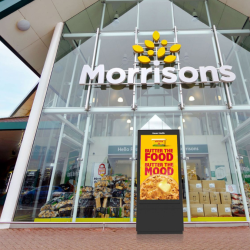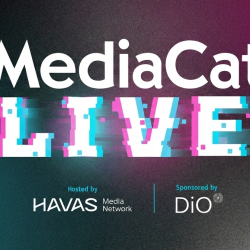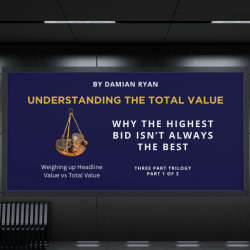Elliot Wright’s recent article on a culture of risk aversion holding back TV investment rightly champions a renewed industry focus on effectiveness, advocating a strategic reallocation of investment towards high-attention channels with proven ROI.
That’s a sentiment with which I wholeheartedly agree.
But his observation that TV feels like a ‘high stakes channel’, that TV is a big bet in a world of safer media choices, is worth discussion. Not least because TV is actually one of the least risky investments an advertiser can make.
TV’s fundamental strength is that it is remarkably, reassuringly predictable. While the creative impact of any campaign can vary — as System1’s work underscores — at a macro level, TV demonstrates astonishing stability in its returns.
Compelling evidence for TV’s lower risk profile can be found in the recent Profit Ability 2 study. The sheer scale of Profit Ability 2 (£1.8 billion of media spend across ten channels analysed by five different econometric modelling companies) allows us to credibly account for the variability of creative impact.
We often consider ROI a fixed number but, in reality, it represents a range of potential outcomes. One of the key insights Profit Ability 2 provides is the identification of the variability of returns for each channel. This means advertisers can pinpoint lower-risk options with more predictable outcomes, as well as higher-risk channels prone to greater underperformance alongside potential high gains.
The channels with the lowest risk profile are linear TV, print, BVOD, online video, and audio — all exhibiting a standard deviation of less than 50%. Conversely, channels like paid social and online display demonstrate a wild variance of +/- nearly 90%.
Bringing risk to life
Let’s illustrate risk in tangible profit terms. Consider an example weekly media budget of £75k. The average return from advertising on TV would be £160k of profit, with a predictable range between £95k and £225k. Even at the lower end, this represents a sound and predictable investment.
In contrast, the same £75k investment in social media might, at its absolute peak performance (representing the strongest single campaign within the £1.8 billion analysed), match TV’s average return of £160k. However, the average return from social media hovers around £82k, with a significantly higher risk of underperformance, potentially yielding as little as £8k.
Notably, even the best-case scenario for social media only equals TV’s average, and with larger budgets than £75k, TV’s predictable advantage would likely widen.
Let’s be brutally honest: if your media buyer proposed an investment where the best possible outcome merely matches TV’s average performance, while the worst case sees 90% of your budget evaporate, you’d fire them on the spot.
Yet this is exactly what is being accepted daily with the digital obsession. We’ve become so intoxicated by metrics of micro-optimisation that we’ve forgotten marketing’s first duty: to reliably build brands, not just burn budgets.
TV’s consistency isn’t a limitation — it’s a lifeline for marketers drowning in digital’s chaos.
Addressing the barriers of sunk cost and speed
Beyond the misperceived risk of TV’s likely performance, concerns about the investment associated with TV, both creatively and in terms of cost of entry, are increasingly outdated.
The notion that TV is solely for big spenders is inaccurate — although it is actually another of TV’s strengths as the perception signals strength about brands that appear on TV. In 2024, a third (around 675) of all TV advertisers invested less than £50,000, demonstrating a far lower barrier to entry than often assumed.
Better creative works better, clearly, but TV will deliver above average with average. Viewers don’t require wall-to-wall box office advertising; great ads can be less polished and this means that creative costs are declining. With the emergence of AI-assisted creative tools, these costs are likely to decrease further.
So: low entry costs and predictable outcomes — a pretty compelling proposition.
While digital platforms undeniably offer advantages in speed to market and real-time responsiveness, the evolution of broadcast video on demand (BVOD) provides a compelling counterpoint within the TV landscape. BVOD merges TV’s brand-building power with digital’s tweakability — A/B testing, rapid creative swaps, and granular targeting. The dichotomy of ‘TV vs. digital speed’ is false.
The data underpinning Profit Ability 2 is publicly accessible and readily applicable to any business through the excellent Media Mix Navigator tool. This resource lets you define your own risk tolerance and access specific data tailored to your category and budget parameters.
With predictable outcomes, increasingly accessible entry points, and the speed of BVOD, TV stands as a foundational, lower-risk investment for brands seeking reliable growth. The question isn’t whether TV works; the question is whether we have the courage to act on what we know.
Every quarter we delay is another quarter where brands wither from a thousand digital cuts while their potential growth is sacrificed at the altar of false security. The data is clear. The tools exist. The only remaining risk is continuing to look away.
Photo by Michał Parzuchowski on Unsplash




















